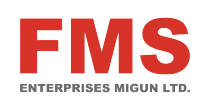Global Protective Coatings Market Outlook to 2026: Focus on Construction, Aerospace, Automotive, Marine, Industrial, Oil & Gas, Power Generation & Mining Industries - ResearchAndMarkets.com
The "Global Protective Coatings Market Outlook to 2026" report has been added to ResearchAndMarkets.com's offering.
Global Protective Coatings market is expected to witness a considerable growth rate during the forecast period.
Increasing demand in the construction and automotive industry is primarily driving the global market for protective coatings, and also the introduction of new technologies has boosted the market further. However, rising environmental concerns and stringent government regulations related to the emission of volatile organic compounds (VOCs) are expected to hinder market growth in the near future.
The ongoing growth in the urbanization and construction industry, especially in the Asia-Pacific region, is likely to drive protective coatings consumption in the forecasted period. The urbanization rate in the Asia-Pacific region is around 1.5% per year, the world's highest. It is estimated that by the year 2030, over half of the population in the region will be urban. According to the United Nations, as of 2020, 33 megacities globally require planned habitation for the rapidly growing urban population.
More than 50% of the global GDP is generated in cities, and urbanization can lead to sustainable growth if managed well by increasing productivity. Urbanization has expanded immensely in recent years. Due to urbanization, there has been a rise in the number of construction projects, high-rise buildings, and other construction types. Thus, as urbanization rapidly increases, the number of construction projects increases, leading to the growth in the usage of protective coatings.
The demand for protective coatings is rising in the automotive industry due to increased overall vehicle demand, aging vehicles, and environmental concerns. Moreover, increasing vehicle production in countries such as China, Mexico, Indonesia, Japan, U.S., South Korea, Germany, and India is further driving the growth of the market.
In North America, powder coatings are widely used throughout primer surfacer operations at Chrysler, one of the United States' biggest automobile manufacturers. At General Motors, for their truck plants and in all new paint shops, powder coatings are gaining pace. Due to the evolution in the automotive sector and the manufacturing material, the automotive sector's protective coatings are also evolving.
One of these evolutions is in using smart coatings because they offer the potential to significantly improve surface durability while adding additional functionalities or properties like self-healing, super-hydrophobicity, and self-stratifying, self-sensing, soundproof, and vibration damping.
Ongoing market trends consist of direct-to-metal (DTM) coatings. As a more efficient alternative to the typical primer and topcoat systems, DTM coatings allow for applying one coat while offering comparable performance to two-coat systems. Many end-user industries are moving from protective coating products containing solvents to 100% solid epoxies and urethanes in response to environmental concerns.
New applicator-friendly cartridge-based dispensing technologies are being developed that reduce labor, waste, and disposal costs. With almost 100% efficiency and hardly any liquid waste, the technology is especially appropriate for smaller-quantity applications, like grooming, touchups, repairs, stripe coatings, and field joint coating.
The marine industry has always acted as the driving force behind the functional global economy. Transportation of larger, bulkier goods such as cars is always preferred to be done by sea as it is less expensive and less taxing on the environment. More than 90% of the global trade flows involve shipping.
Marine coatings are a type of protective coating used mostly in the marine environment to protect ships, vessels, tankers, and other materials from saline water or freshwater. Marine coatings have specific functional properties; therefore, it can provide superior protection to the surfaces to which it is applied.
Multiple coatings are formulated to ensure smooth sailing, such as anti-corrosive and anti-fouling, to keep the ships running efficiently. Anti-fouling coatings, which are used to protect ships from organisms that can impede performance, have been the most in-demand over the last few years. Foul-release coatings are biocide-free and environmentally compatible.
Some of the Major key players in the global market are found to be AkzoNobel NV, RPM International Inc., PPG Industries, and The Sherwin-Williams Company, among others.
Key Topics Covered:
1. Executive Summary
2. Research Scope and Methodology
2.1 Aim & Objective of the study
2.2 Market Definition
2.3 Study Information
2.4 General Study Assumptions
2.5 Research Phases
3. Market Analysis
3.1 Introduction
3.2 Market Dynamics
3.3 Market Trends & Developments
3.4 Market Opportunities
3.5 Feedstock Analysis
3.6 Regulatory Policies
3.7 Analysis of Covid-19 Impact
4. Industry Analysis
4.1 Supply Chain Analysis
4.2 Porter's Five Forces Analysis
5. Market Segmentation & Forecast
5.1 By Resin
5.1.1 Alkyd
5.1.2 Epoxy
5.1.3 Polyurethane
5.1.4 Acrylic
5.1.5 Polyester
5.1.6 Others
5.2 By Technology
5.2.1 Water-borne
5.2.2 Solvent-borne
5.2.3 Powder
5.2.4 Others
5.3 By End-User Industry
5.3.1 Construction
5.3.2 Aerospace
5.3.3 Automotive
5.3.4 Marine
5.3.5 Industrial
5.3.6 Oil & Gas
5.3.7 Power Generation
5.3.8 Mining
5.3.9 Others
6. Regional Market Analysis
7. Key Company Profiles
7.1 Axalta Coating Systems
7.2 BASF SE
7.3 Akzo Nobel NV
7.4 Hempel
7.5 Jotun
7.6 Kansai Paint Co. Ltd.
7.7 Nippon Paint Holdings Co., Ltd.
7.8 PPG Industries Inc.
7.9 RPM International Inc.
7.10 Tikkurila OYJ
7.11 The Sherwin-Williams Company
7.12 Nasaco International Ltd.
7.13 Arkema Group
7.14 Beckers Group
7.15 HB Fuller Company
8. Competitive Landscape
8.1 List of Notable Players in the Market
8.2 M&A, JV, and Agreements
8.3 Market Share Analysis
8.4 Strategies of Key Players
9. Conclusions and Recommendations
For more information about this report visit https://www.researchandmarkets.com/r/wjqr30
View source version on businesswire.com: https://www.businesswire.com/news/home/20211020005836/en/



